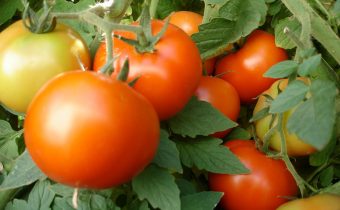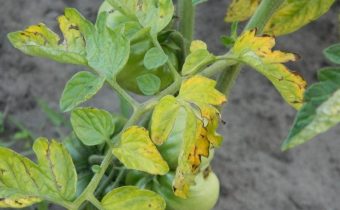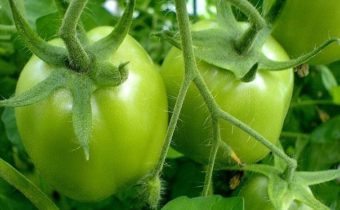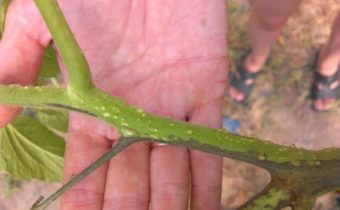Black dots on fruits and leaves of tomato, what is it and how to treat?
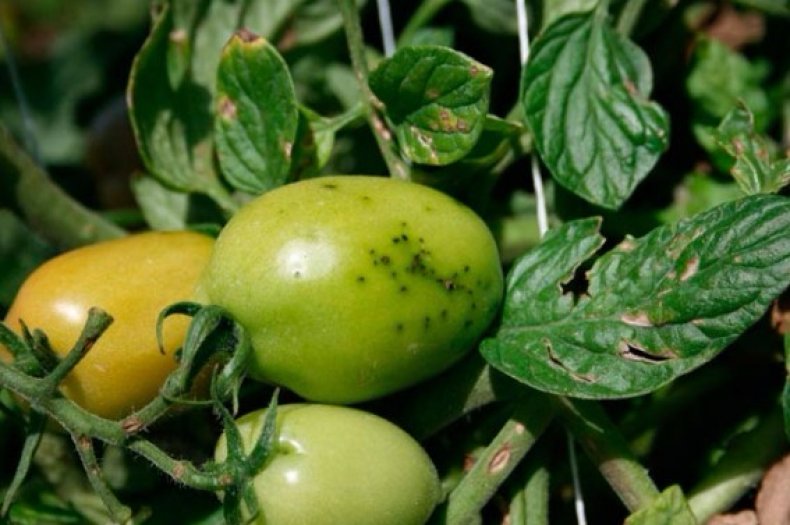
Most of the common diseases of tomatoes are accompanied by the appearance of dark spots on the leaves and fruits, in the initial stages of development of the disease can be difficult to diagnose. The black bacterial punctuality of tomato stands out with the clearest and most obvious signs of damage, the problem is immediately visible.
This is good, because if you do not start treatment in a timely manner, the disease will spoil the appearance of almost all of the ensuing fruits, and the yield will decrease.
Description and symptoms of black dotted tomato
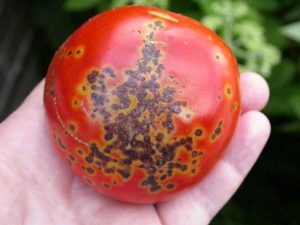
Bacterial dotting of tomato is common in all countries and regions where crops are grown. The disease affects tomatoes in the open and closed ground. The disease is actively spreading in cool (13–24 degrees) and humid conditions, it can also appear in drought, if drip irrigation is carried out over the leaf.
The surviving bacterium is stored for a long time in the soil, on plant debris, weeds, and is transmitted along with the seed.
The causative agent affects all parts of the tomato bush, except the root. Brown specks with yellow edging appear on the leaves. On the tips of the plates where water accumulates, the spots are black with a yellow rim, exactly the same as the form of accumulations of moisture. Over time, the affected areas grow together, the leaves die off.
On the branches and petioles black spots have an oval, elongated shape. On green tomatoes appear slightly raised black spots with a darker rim with a diameter of up to 1 mm. Spots do not increase in size, but sometimes foci can be larger, indented. Defeats do not lead to rotting of fruits, they reduce their commercial quality.
Serious, epidemic outbreaks are rare. Adverse weather and non-compliance with the rules of agricultural engineering contribute to the strong spread of bacteria. In advanced cases, infected bushes are stunted, which leads to late ripening of the tomato and lower yields.
Prevention and treatment

There are practically no preparations developed especially for the fight against black bacterial dotting of tomato fruits. However, experienced gardeners always find a way to treat even the most difficult diseases, and this ailment is no exception. We describe all possible treatment and prevention options for the disease.
Agrotechnical receptions
Cleaning the weeds during the season, carry them away from the garden, in the fall all plant residues are burned. Tomatoes are planted on the same site every 3 years. When working with seedlings, you need to be careful not to allow damage to young tissues, it is through them that the bacteria gets into the organs of the plant.
In dense plantings, adult bushes form continuous thickets, are poorly ventilated. After rains, morning dew or improper watering, they remain wet for a long time. The minimum distance between the bushes is 40 cm. The lower leaves are pruned as the stems grow, and the extra stepchildren are removed, all trimming is done in dry weather.
Watering tomatoes is necessary only at the root, the ground cannot be re-moistened, evaporating, moisture accumulates on the leaves and stems, the risk of infection of tomatoes increases.
Tall varieties are tied up, and undersized, too, it is desirable to lift from the ground.When growing tomatoes in the greenhouse, the room is ventilated as often as possible. In open ground, tomatoes are planted in open, well-lit areas.
Chemical and biological products
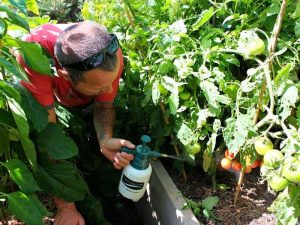
Spraying copper-containing drugs designed to combat phytophthora helps to stop the development of pathogen punctate. Treatments are best done in the early stages of the growing season of tomatoes (before the appearance of the ovaries) or immediately after the first signs of the disease appear. Already diseased plants are treated with Fitolavin or Ordan (3 treatments with a difference of 4 days).
Good results are given by such biologics as Phytodoc, Fitosporin-M and Trichodermin, they are used for treatment and prevention. To control the disease, in conditions of high humidity and cool weather, Kaptan and Mancozeb alternate (according to the instructions). Spray bushes can be once in 1 or 2 weeks. Self-collected seeds, or purchased from an unknown manufacturer, are soaked for 30 minutes in hot water (50–52 degrees).
Resistant varieties
The most reliable prevention of black bacterial dotting of tomatoes will be the selection of resistant varieties:
- Little Prince;
- Moscow lights;
- Spartak F1;
- Virtuoso;
- Orange giant;
- The cinnamon miracle;
- Profitable;
- Ray;
- Carrot;
- Boheme F1;
- Blitz F1;
- Opera F1.
Purchase certified seeds and only in proven places with a good reputation. Observe crop rotation and ensure that weeds do not grow on tomato beds. All the above tips will help you grow healthy tomatoes without black dots on the fruit.



